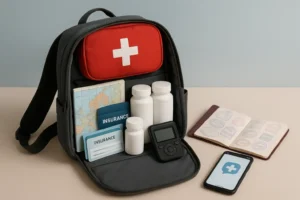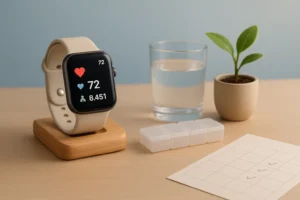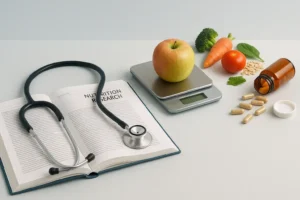At a small logistics firm in Missouri, a shift supervisor glances at her Fitbit after lunch. Her Personal Health Dashboard flashes a gentle alert: her stress levels are elevated, her heart rate erratic. She opens the Living 2.0 app, completes a brief breathing exercise, and books a 6 p.m. telehealth session with a wellness coach, all before her next team meeting.
This moment, barely distinguishable from checking a weather forecast or sending a text, captures a radical shift in how working Americans interact with healthcare. And behind that shift is a digital-first benefits platform called the Preventative Care Management Program (PCMP), developed by The TE Group. More than just a workplace perk, PCMP is building a case for what healthcare could, and perhaps should, look like in a digitally transformed society.
A Digital Leap from Reactive to Proactive
The U.S. healthcare system has long operated in a state of reactivity. Patients wait until symptoms are severe, rack up bills in urgent care or emergency rooms, and often face administrative red tape just to access help. But data tells a compelling story: digital health is turning that model on its head.
In 2023, the global digital health market reached $211 billion and is projected to exceed $600 billion by 2030. Wearables now monitor more than steps. They track sleep cycles, blood oxygen levels, heart rate variability, and stress. Meanwhile, nearly 90% of large employers now offer virtual health services, though few provide seamless integration across benefits.
That’s where PCMP stands apart. “We weren’t interested in offering just another telehealth app,” said Bill Koehler, a partner at The TE Group and Accredited Investment Fiduciary. “We built a system that connects the physical, mental, and financial health of the employee into one continuous digital experience.”
The Innovations Powering PCMP
At the centre of PCMP’s tech-forward approach is the Personal Health Dashboard, or PHD. This secure, mobile-accessible platform houses real-time health metrics, wellness tools, medical records, and a suite of benefits. The PHD syncs with popular devices — Fitbit, Garmin, Apple Watch — to transform a passive accessory into a powerful diagnostic and preventative care tool.
Employees can log in anytime to review their Health Risk Assessment (HRA), track sleep, monitor activity, or follow up on coaching recommendations. The integration is fluid and intuitive — there are no separate logins and no hidden fees.
Beyond monitoring, the program provides round-the-clock telemedicine access to U.S. board-certified physicians. Using video, phone, or chat, patients can consult with doctors who can diagnose common ailments and send prescriptions directly to local pharmacies. There are no copays and no waiting rooms, just immediate, responsive care.
But PCMP goes further than urgent care. It includes Wholeistic Health Coaching, giving participants unlimited access to personal nurse coaches trained in chronic condition management, stress mitigation, and long-term wellness strategy. Users can book recurring appointments, track progress through the PHD, and follow behaviour-change modules covering nutrition, tobacco cessation, and fitness.
And for mental health, the platform offers a comprehensive Employee Assistance Program (EAP). From video counselling to legal and financial consultations, the EAP is engineered to address the growing mental health strain in the workplace. According to The TE Group, more than 50% of PCMP participants used EAP resources within their first year, well above the industry average of 6–8%.
Tech That Pays Off, Literally
The innovations are not just theoretical. PCMP’s integration of health technology has real, quantifiable outcomes. Internal program data shows that employers save an average of $500 in payroll taxes annually per full-time W-2 employee thanks to the program’s IRS-compliant structure. Employees, meanwhile, retain their net pay while gaining access to supplemental benefits like life, accident, and hospital insurance, at no out-of-pocket cost.
“We hear it all the time — employees can’t believe they’re getting more while paying nothing extra,” said Michael Neal, a partner at The TE Group who previously worked with PwC’s investment clients. “The tech makes it possible. It automates savings and directs them where they make the most impact — into the health and financial wellbeing of the workforce.”
Further, TE Group data shows a 27% reduction in ER visits and a 35% increase in early-stage intervention for chronic conditions among program participants. That’s not just good for workers—it’s good for businesses staring down rising healthcare premiums and burnout-related turnover.
Living 2.0: Technology Beyond the Clinic
One of the lesser-known tools in the PCMP toolkit is Living 2.0, a collection of lifestyle and financial apps designed to make wellness practical, not performative. The offerings range from bill negotiation services (lowering utility and phone costs), to student loan assistance, to cashback rewards for daily steps.
There are also digital tools for relationship health, social anxiety support, PTSD recovery, and even smart sober living programs. Combined, these resources form a support system that follows employees out of the office and into their lives.
“We see health as more than just prescriptions and appointments,” added Koehler. “It’s what you eat, how you sleep, how stressed you are, and whether your finances keep you up at night. Living 2.0 helps connect all those dots digitally.”
The Future Isn’t Coming, It’s Here
Despite its ambitions, PCMP hasn’t relied on hype. Instead, it’s relied on user data, tax law, and common sense to re-engineer how workplace benefits operate. It offers a version of healthcare that is frictionless, data-driven, and deeply human.
As the market hurtles toward increasingly digital solutions in healthcare, PCMP’s model offers something concrete: a working prototype of what an integrated, tech-powered, employee-first benefits ecosystem looks like.
For those still asking what the future of healthcare holds, PCMP offers a clear reply — it’s wearable, trackable, coachable, and accessible 24 hours a day. And for thousands of employees across the country, it’s already here.











